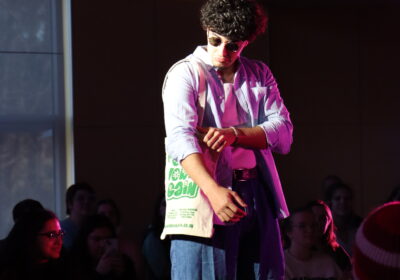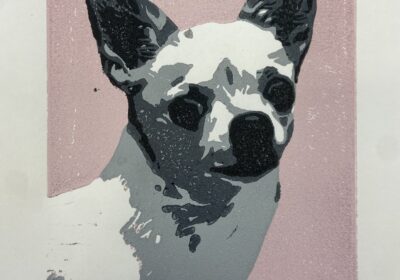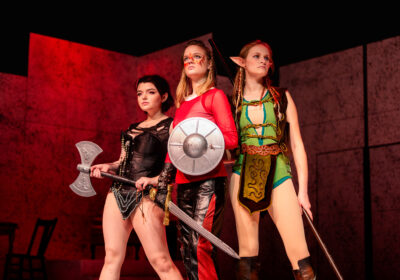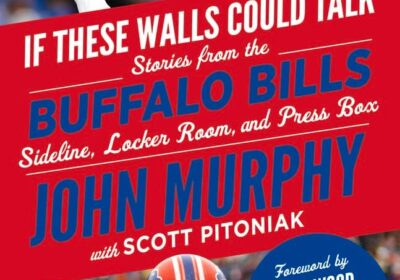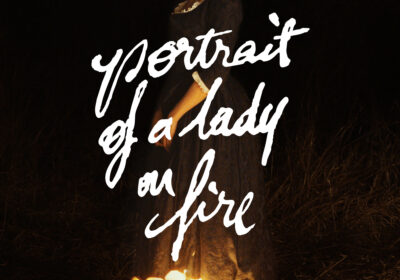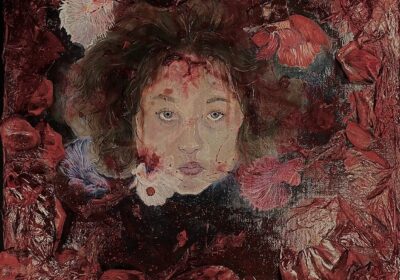Students create sculptures out of found objects

Castleton University honors students saw boards to create a structure that must be entered and exited. Photo by Olivia Maher.
First-year students in the Castleton Honors program had quite the hands-on adventure a few weeks ago in the 1787 Room. With only “found objects” being used as materials, their minds and hands were put to the test.
There were six groups. The objects were five pieces of 5/8 inch x 8 foot wooden strappings, a 16 foot x 16 foot clear plastic tarp, a large roll of butcher block paper, duct tape, lighting gels, zip ties, rope, a handsaw and a construction lamp.
Alex Jensen said he was kind of confused when he got there and saw the various materials scattered around.
“I was really confused, and then when I saw the lack of directions with all the materials, I was still pretty confused. I was not necessarily mentally prepared for whatever idea they were going to throw at us,” Jensen said.
The challenge? Build a freestanding sculptural installation that must be able to be entered and exited.
There were a couple tricks involved as well. No structure could be the same and each of the six groups structures must be connected in the end.
Students walked into the room, saw the materials, sat down at a table for a very brief introduction and were ready to take on the challenge.
What came next was the ultimate collaboration between “brilliant minds”, communication between six groups, a few battles for a teepee design (remember, no two groups structures could be the same) and one giant, crazy-looking fort.
Oliver Rodgers, another student in the Honors program talked about his thoughts on the project as a whole. “I actually did have a good time once we got into it, it was a lot of fun,” Rodgers said. “It was fun. We really worked well together,” Jensen agreed.
Professor Oliver Schemm lead the workshop. His goals were to produce a real-life learning experience for the students participating, something that they could use again in their life beyond college.
“What I really wanted to do is simulate an everyday life experience which is where you find yourself with a problem, there are parameters, you only have so many tools to fix that problem and you use what you have. You think on your feet,” Schemm said.
He connected his workshop to the experience of entering a new work environment.
“You have all these different personalities. You also have a learning curve, everything is thrown at you at once,” Schemm said. “You may have some previous experience but in a very short period of time you have to not only understand who it is you’re working with, what your boss is like, what is expected of you within the job, as well as the different kinds of tools and platforms that you’re going to be working with.”
Rodgers said Schemm did a great job of providing a real-life scenario through an art workshop.
“I definitely got some teamwork skills, there was a lot of teamwork. Not just within your own group, but with all the other groups as well,” Rodgers said. “Also just being able to solve problems on the fly, and you know that’s some of the things that you might just walk into your job one day and they’ll be like 'go!'"

